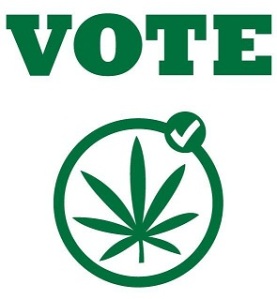Legalizing marijuana in the United States will lower government spending, improve the economy, enhance medical practices, and create safer places for children and families to interact, learn, and live. The movement to legalize marijuana in the United States will be beneficial to society in a multitude of ways.
Legalizing marijuana would substantially decrease government spending. There would be a reduction in law enforcement and judiciary resources from the elimination of marijuana incarcerations. The Budgetary Implications of Marijuana Legalization in Massachusetts, by Jeffrey A. Miron, a professor of Economics at the University of Boston stated: “In 2000, arrests pertaining to marijuana possession in Massachusetts resulted in a cost of $40.3 million” (Miron). As of August 2013, the unemployment rate in the United States was 7.3%, making taxpayer dollars more essential than ever. Taxpayer dollars should be utilized to boost the economy and allocate financial resources towards other government jobs. Funding these jobs is far more important than spending taxpayer dollars on marijuana possession arrests.
Since marijuana is illegal, the government cannot monitor or make a profit on the sale of this substance. Adopting marijuana as a recreational substance such as tobacco or alcohol could introduce state or federal taxes on the substance. These taxes could be similar to the state tax for tobacco products in Massachusetts at about 40%. The result of taxing marijuana could create millions, if not billions of dollars in income for the federal government. Larry Breed from Tobacco News and Information stated, “Roughly 414,000 jobs are directly linked to the tobacco industry, another 296,000 jobs derive from allied industries, directly raising over ten billion dollars in federal, state, and local tax dollars annually” (Breed). Marijuana can have this type of effect on the economy. The marijuana industry has the potential to create thousands of jobs and significantly add to the tax revenues in the United States.
Todd Mikuriya’s, Marijuana: Medical Papers, describes the evolution of marijuana. “The prolonged use of marijuana does not lead to the development of physical dependence. Cannabis products have exceedingly low toxicity and produce no disturbances of vegetative functioning. The active constituents of cannabis might be quite useful in the management of many chronic disease conditions” (Mikuriya). Marijuana is a clean drug, with low risk factors. Its serves as a stimulant and a painkiller, and it can be beneficial to patients with terminal illnesses such as cancer. marijuana has been used as medicine for several hundreds of years. It was used in ancient China by emperor Shen-nung to grow hemp for fiber and hemp preparations were used in ancient India as a local remedy for sickness. Legalizing marijuana will enhance the strength of a dispensable, low risk factor medicine in the medical field.
Marijuana is often found in public places like schools and parks where adolescents are more likely to acquire marijuana over other substances such as tobacco and alcohol. Drug protection is an ongoing fight in the United States and because marijuana is so accessible among teenagers, monitored regulation is the only answer to improving awareness. Billiamin A. Alli’s, Marijuana and the Adolescent, explains the reasons for the recreational smoking of marijuana among teenagers: “Students smoking marijuana serves as an expression of freedom from society and its unfair laws” (Alli). Legalizing marijuana would allow the government to regulate the sale and consumption of the substance. Instituting an age requirement similar to tobacco and alcohol products would limit adolescent consumers from acquiring marijuana. This would make marijuana less accessible among teenagers, and would limit its abundance in schools and other public places.
Prohibition of marijuana is not helping anyone. It is costing the government millions of dollars annually, and the costs are continuing to rise with the increasing popularity of this controlled substance. Marijuana can be very useful in the medical field and should be utilized. The use of marijuana among teenagers has become increasing more difficult to handle. Drug free zones are becoming less safe because of it. The process of legalizing marijuana would help regulate the acquisition of this substance and limit its existence within the adolescent community. Legalization is the answer to these issues in the United States, and should be recognized by the federal government.
Bibliography
Alli, Billiamin A. “Physiological Action.” Marijuana and the Adolescent 1978th ser. 70.9 (n.d.): 677-80. NCBI. U.S. National Library of Medicine. Web. 11 Nov. 2013. <http://www.ncbi.nlm.nih.gov/pmc/articles/PMC2537146/?page=2>.
Breed, Larry. “STRATEGIES OF THE TOBACCO INDUSTRY.” STRATEGIES OF THE TOBACCO INDUSTRY. N.p., n.d. Web. 11 Nov. 2013. <http://archive.tobacco.org/resources/history/strategieslb.html>.
Mikuriya, Todd H. Marijuana: Medical Papers, 1839-1972. Oakland, CA: Medi-comp, 1973. Print.
Miron, Jeffrey A. The Budgetary Implications of Marijuana Legalization in Massachusetts. Issue brief. Boston: n.p., 2003. Print.
News, Sky. “Marijuana Has Economic Benefits.” YouTube. YouTube, 11 Oct. 2009. Web. 03 Dec. 2013. <http://www.youtube.com/watch?v=v_QQxWYNecw>.
Rawlings, Rich. “Study Says It’s Easier For Teens To Buy Marijuana Than Beer.” YouTube. YouTube, 28 Aug. 2009. Web. 03 Dec. 2013. <http://www.youtube.com/watch?v=5NfGsUdRpng>.

This work is licensed under a Creative Commons Attribution 4.0 International License.
